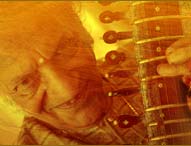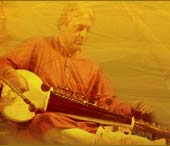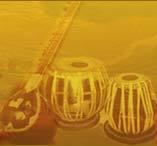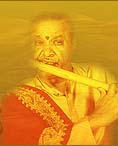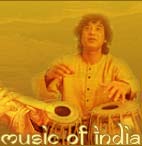Born On: April 16, 1813
Born In: Travancore, Kerala
Died On: December 25, 1846
Career: Maharaja of Travancore, Musician, Writer
Nationality: Indian
Royalty ran in his blood, not just through the royal family he was born into, but through his spectacular and phenomenal performance she gave via his music. A rare, rather unique, combination of talent and royalty is not often found on Indian ground. But Maharajah Swathi Tirunal Rama Varma ensured that he fell into this category, not just for gaining popularity, but for creating history in the related field. With over 400 compositions in five languages, namely, Sanskrit, Malayalam, Hindustani, Telugu, and Kannada, he created compositions in all types, such as Tanavarnam, Padavarnam, Swarajati, Krti, Kirtanam, Ragamalika, Javali, Tillana, Bhajan, and even some Hindusthani styles, such as Drupad and Tappa.
Early Life
Swathi Tirunal Rama Varma was born in the princely state of Travancore in South India. He was born as the second child to Regent Queen Gowri Lakshmi Bayi and Rajaraja Varma Koyithampuran of Changanasseri Palace. He had an elder sister Rukmini Bai and a younger brother Uthram Thirunal Marthanda Varma. His mother dies two months after the birth of the third child. Since Rama Varma was just 17 months when his mother died, his mother's sister, Gowri Parvati Bayi took charge of the state until Rama Varma turned old enough to handle the state. 14 years later, Ram Varma ascended the throne and took over as king. Since both his aunt and father were scholars and learned people, Rama Varma's education was taken special care of. He began learning Sanskrit and Malayalam at six years and English at seven. By the time he attained maturity, he was well-versed with several languages, including Malayalam, Tamil, Kannada, Hindustani, Telugu, Marathi, English, Persian, and Sanskrit. Apart from languages, Rama Varma took keen interest in grammar, poetry, and drama. As a great monarch, he facilitated art and music in his state.
Career
Swati Tirunal was given an impetus in singing by Karamana Subrahmanya Bhagavatar, a well-known musician of the palace. Subba Rao did not only have theoretical knowledge of music, but was also quite skillful in its practical applicability. He got engrossed with singing and began to enjoy it. He even learnt to play the musical instrument swarabat, which is a rare skill and is known by hardly anyone. His immense love for music brought a large number of eminent musicians to the court, who, in turn, gave Swati a valuable insight into the field of Indian classical music. A Maratha singer named Meruswamy alias Anantapadmanabha Goswami gave Rama Varma an introduction to Carnatic and Hindusthani music. He also gave him a deep understanding about the 'harikatha' tradition. Some scholars and musicians who worked in close association with Rama Varma include Irayimman Thampi (poet), Shatkala Govinda Marar (musician), Parameswara Bhagavatar (singer), Kilimannoor Koil (Sanskrit scholar cum poet) etc.
Contribution to Music
Swati Tirunal made an incredible contribution to the field of Indian music. He composed near about 500 songs, for which he is admired even today. He had composed a number of musical plays as well. His notable works include Varnams, Javalis, Padams, Swarajatis, Kritis, and many more. As far as Hindustani music is concerned, his praiseworthy compositions comprise of Dhrupads, Thumris, Tappas, Bhajans, Khyal, etc. For the Navratri festivity, he composed numerous kritis in the praise of Goddess Devi.
Personal Life
Swathi Thirunal had an early marriage but his wife died soon. Later, he was married a second time to Thiruvattar Ammachi Panapillai Amma Srimathi Narayani Pillai Kochamma of the Thiruvattar Ammaveedu family. His wife was a skilled Carnatic singer and Veena player. The couple had a son named Thiruvattar Chithira Nal Anantha Padmanabhan Chempakaraman Thampi. In 1843, Swathi Thirunal had a third marriage with Sundara Lakshmi Ammal, daughter of a Mudaliar, who migrated to Trivandrum. Sundara was better known as Sugandhavalli, as she was a dancer. Legend has it that his second wife did not approve the marriage and hence, Sugandhavalli was banished from Travancore. This proved traumatic for the Maharajah was believed to have died due to broken heart in 1846.
Death
This great patron of art left for the heavenly abode at an early age of 33 in 1846, leaving his subjects in distress at the loss of this great man. His elder brother, Uthram Thirunal Marthanda Varma succeeded the throne and retained it until his death in 1860. Thereafter, his sister's children ascended the throne and ruled the kingdom of Travancore.
Timeline
1813: Born in the royal family of Travancore state
1829: Crowned as the King of Travancore
1843: Third marriage with Sundara Lakshmi Ammal
1846: Died at the age of 33.
